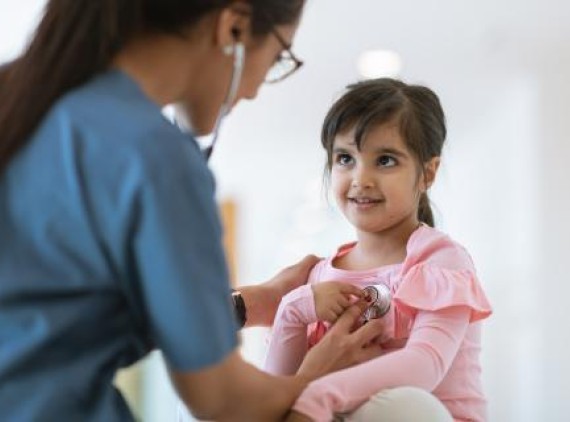Each year, 10,000 to 14,000 children are hospitalized with heart failure, meaning their hearts are not quite strong enough to pump blood to their vital organs. A chronic condition, heart failure often leads to multiple hospital visits for these young patients, as we monitor their heart and lung functions, and strive to keep them as healthy as possible. In some cases, though, heart failure progresses, and a patient may need a heart transplant.
Fortunately, two new technologies now offered at Phoenix Children’s are helping children remain more comfortable at home while we monitor and manage their heart health and, in some cases, while they await a transplant.
The first technology is the CardioMEMS™ HF System, which consists of two parts: a very small wireless sensor and a home monitoring unit. During a cardiac catheterization (a minimally invasive procedure), one of our expert interventional cardiologists places the sensor into the pulmonary artery, which carries blood from the heart to the lungs. Once in place, the sensor sends daily measurements of the pressures inside the lungs to our heart failure team at Phoenix Children’s.
These measurements help us monitor how well the heart is squeezing and relaxing, and how high the internal lung pressures are. The patient simply lies on a pillow at home for a few minutes each day while a physician views these measurements remotely. They can then recommend any needed changes in medication or fluid intake.
At Phoenix Children’s, we see patients from across the state and the southwest, and we know that traveling to and from our hospital is often a burden for them and for their families. The CardioMEMS system makes a tremendous difference, allowing us to monitor our patients daily and intervene early, if needed, all within the comfort of their home.
The second exciting new technology, the SynCardia Total Artificial Heart (TAH), is lifesaving for patients with certain types of complex heart disease. If a patient has both left- and right-sided heart failure or has other underlying conditions that prevent us from implanting a left ventricular assist device (LVAD)* alone, the SynCardia TAH offers new hope.
To place the TAH, a cardiac surgeon removes both of the patient’s heart-pumping chambers and replaces them with the SynCardia artificial pumps. These pumps are connected via drivelines to an external device that the patient carries in a small backpack or fanny pack. This device essentially pumps blood in and out of the ventricles, taking the place of the patient’s heart.
Following the placement of the SynCardia, patients are given time to stabilize and are then transitioned to a mobile version of the pump, called the Freedom® Portable Driver. With this version, patients can begin to walk the halls of the hospital, participate in rehab, and ultimately, return home.
Originally used only in adults, SynCardia is now available in a small-enough size for our younger patients. It can support a patient as long as needed while they await a heart transplant. At times, it is also used to give a patient time to fully recover and rehabilitate before undergoing a transplant.
For some patients with SynCardia, we use the CardioMEMS device to monitor their condition, making both technologies work toward their better health.
Teamwork is what makes all of this possible. Our specialized mechanical circulatory support team includes cardiologists with heart failure expertise, interventional cardiologists, cardiac surgeons, specially trained nurses and nurse practitioners, as well as a dedicated social worker, nutritionists and pharmacists. While the child life team and the speech, occupational and physical therapists are not dedicated specifically to the team, it would be impossible to do this great work without them. Also, the cardiac intensive care team members are critical to our patients’ success during their initial hospital admission.
These technological advances illustrate our commitment not only to provide the best possible care, but also help our patients have the best quality of life. We are excited to be able to offer both CardioMEMS and SynCardia to make life a little easier and a little better for our patients and their families.
*An LVAD is a device implanted in the chest to help pump blood from the lower left chamber of the heart to the rest of the body.

